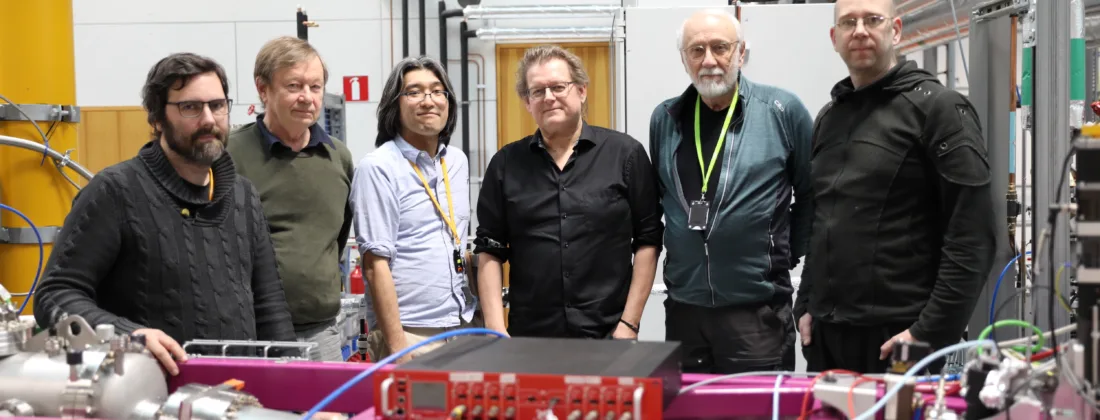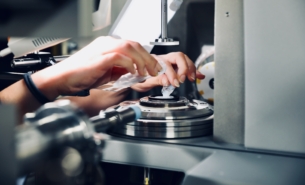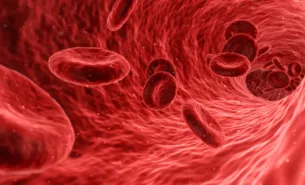In a recent study at Veritas beamline, researchers from Uppsala University in Sweden observed parity-forbidden transitions to electronic states in an oxygen molecule due to interference analogous to Young’s double split experiment (YDSE). The findings, published in Science Advances, may change the way spectral data is interpreted for RIXS experiments and refine the conventional wisdom in synchrotron science for the interplay of photons with the dynamics of atomic nuclei in molecules.
There is consensus among physicists that strict parity selectivity is required in dipole approximation with soft X-rays in the field of resonant inelastic X-ray scattering (RIXS). Meaning, when photons hit an inversion symmetric molecule, the wave function, gerade (even) final states of electrons should not be possible to observe together with ungerade (odd) final states. This rule has been used realibly to interpret X-ray absorption spectroscopy (XAS) data—until now.
“In method development it is natural to try to challenge the established rules, and with the unique capability at Veritas to do high-resolution molecular RIXS with varying scattering angle, we had the chance to test a theory that YDSE interference may violate the rule,” said Jan-Erik Rubensson, study author and Professor of X-ray Physics at Uppsala University.
The Uppsala researchers have some history with MAX-lab. With pioneering expertise in RIXS technique dating back to the 1980’s, the research group led the original development of Veritas beamline and also assisted with the construction and operation of beamline i511 at MAX II.

Scientists use the RIXS technique to study the characteristics of quantum or correlated materials, for example, electron behaviour in atoms to understand the electronic structure. The Uppsala research group probed the model diatomic molecule, oxygen, which by definition contains two identical atomic centres. With scattering, the combined excitation of the atoms is referred to as entanglement in quantum mechanics. When a photon hits the molecule, it is unknown which atom, left or right, the photon scatters from.
Measuring a trillionth of a billionth of a second
At Veritas, the researchers monitored the angular dependence of the scattering and successfully measured the very small time gap induced by scattering from the two atomic nuclei of the oxygen molecule. Their results show that this time gap, on the order of zeptoseconds, creates a different scattering pattern of the sample than previously predicted. A phase shift for scattering at the two nuclei is described as large enough to produce an intense pattern of the forbidden electron states.
“With scattering that involves the whole molecule it is not safe to assume that the electric field of radiation is the same throughout the system anymore. What we see is that it does not work for the parity of the molecule,” explained Johan Söderström, study author and Associate Professor of Physics at Uppsala University. “The wavelength is not long enough compared to the molecular size. The molecular dipole approximation does not work, which we see in the violations of parity selectivity.”
The scattering amplitude in 2 dimensions from the oxygen molecule as it rotates a full circle in 2 dimensions. Although the amplitude is less than that to “dipole allowed” final states, it is clearly larger than zero and not isotropic. This scattering amplitude arises due to the YDSE scattering from the two atomic sites. Credit: Johan Söderström
Veritas beamline is designed for RIXS experiments, a spectroscopic method to precisely control and measure changes in energy and momentum of photons directed onto a sample. The beamline features a long, rotatable spectrometer and a unique optics system built outside the main sample chamber which makes possible studies of liquid and gases as well as solids.
“The combination of high resolution RIXS, the possibility to change the scattering angle and the fact that we allow non-UHV sample environments means we can apply RIXS to gases, liquids and in-situ and in operandi sample environments. Something that cannot be done elsewhere in the world currently,” said Conny Såthe, physicist and Veritas spectroscopy manager. Såthe was also part of the Veritas development team in earlier work at Uppsala University.
Insights from the study offer promise for better RIXS data interpretation involving many processes where oxygen is weakly bound, such as binding of metal complexes to battery electrochemistry to oxygen transport in blood for aerobic respiration.
The Uppsala group continues with experimental studies of the scattering process in diatomic molecules. Specifically, the process where incoming photon absorption by one atom is followed by emission from another atom.




